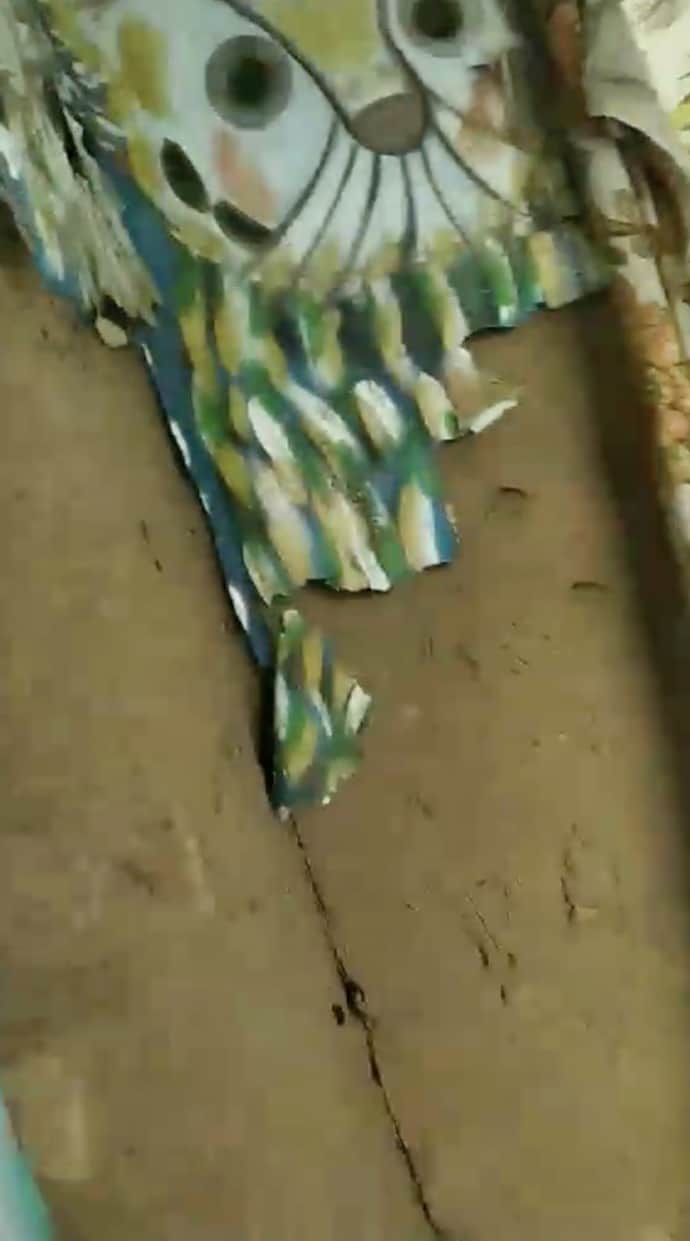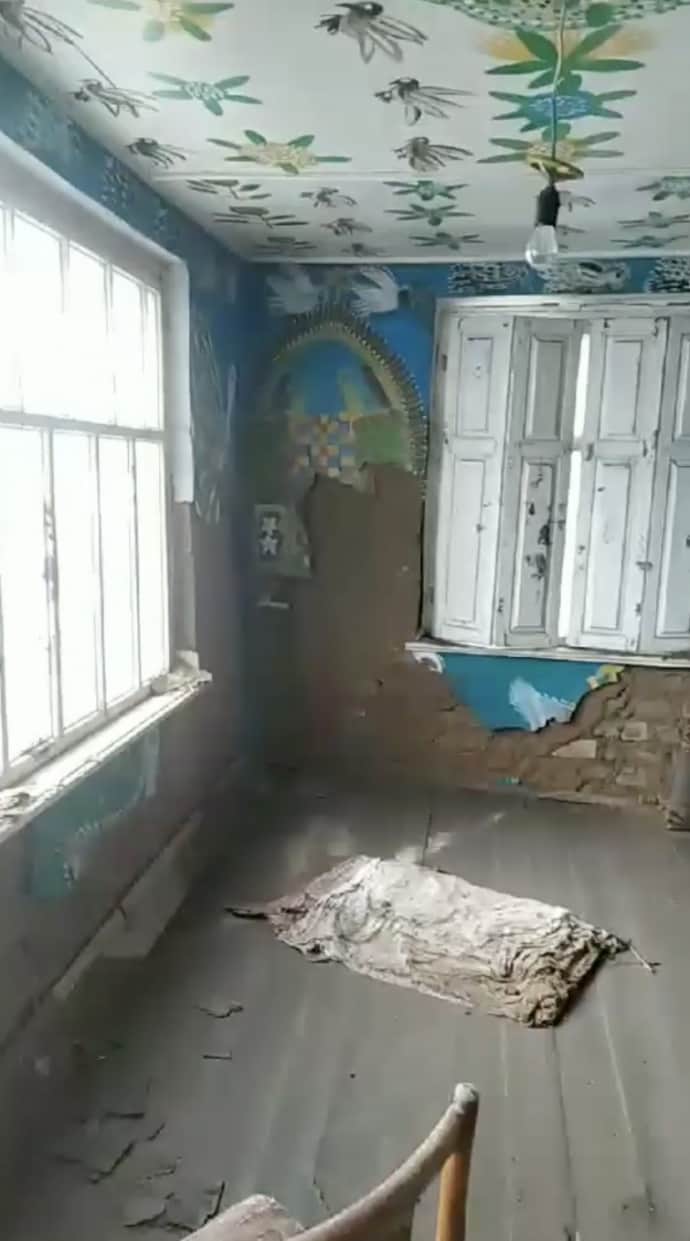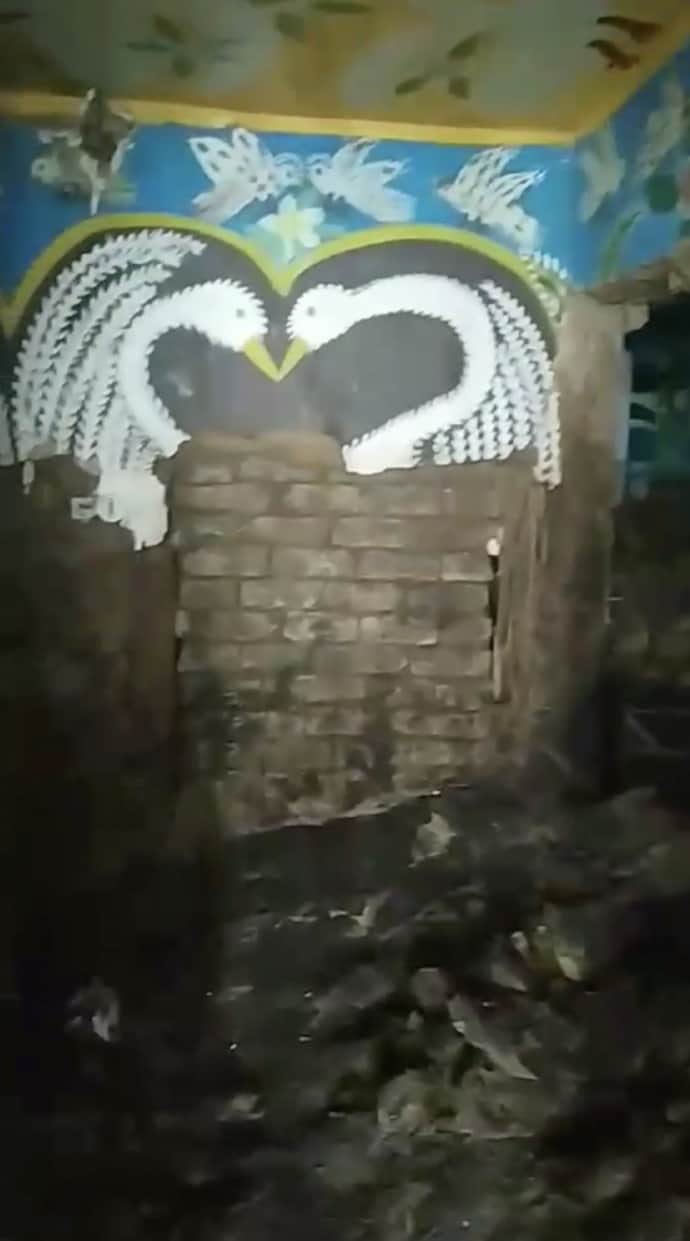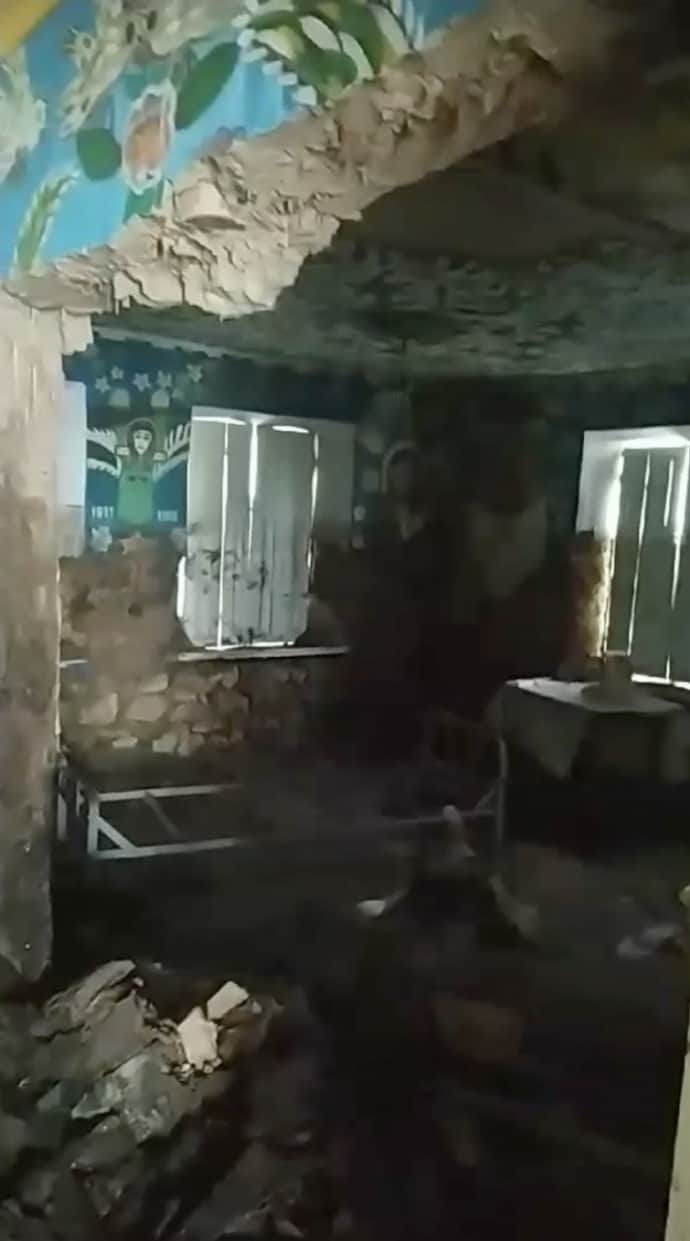Polina Raiko's house-museum in Oleshky almost completely destroyed by flood
The house-museum of the artist Polina Raiko in the town of Oleshky (Kherson Oblast), which was flooded due to the blowing up of the Kakhovka Hydroelectric Power Plant by the Russian occupiers, has been almost completely destroyed.
Photos and videos of the destroyed museum were shared on Facebook by Semen Khramtsov, a representative of the Polina Raiko Kherson Oblast Charitable Foundation and an artist.
According to Khramtsov, about a third of Raiko's works have been preserved in the house, and the interior walls have collapsed. "This is mourning! I have been sent a video from Polina Raiko's house... More interior walls have collapsed, now it's a terrible open space... About 30-40% of the frescoes (with the ceilings) have been preserved, but the ‘wall with the sisters’ has been completely lost. And along the way, the ‘fisherman husband’, the nurse... everything below... The cats are half gone, and the ‘road to paradise’ too... I don't know how much longer it will stand," Khramtsov wrote.
In a conversation with Ukrainska Pravda.Kultura, Khramtsov said that while Oleshky is occupied, no one will be engaged in the professional preservation of Raiko's works. Therefore, the task in the near future is to dry the house, which has been flooded.
"Women will do what they do with their houses – pump out water and dry it out. But to preserve it 'scientifically', in a museum-like way, of course not," he said.

Polina Raiko's house-museum was destroyed. Photo: Khramtsov Simon / Facebook

The museum was flooded on 7 June. Photo: Khramtsov Simon / Facebook
The artist explained that after the liberation, a group of specialists would have to be formed to go and rescue everything that was left there.
"The order is as follows: do not touch anything, remove excess garbage and dry it. That's all," Khramtsov emphasised.

The museum was flooded on 7 June. Photo: Khramtsov Simon / Facebook

Photo: Khramtsov Simon / Facebook
It became known that the house-museum of artist Polina Raiko in Oleshky was under threat of flooding on the day the occupiers blew up the Kakhovka Hydroelectric Power Plant dam on 6 June.
The very next day, on 7 June, the house with the frescoes was under water and had been flooded all this time.
Polina Raiko is a self-taught Ukrainian artist in the genre of naïve art. She is a native of the town of Oleshky. She started painting at the age of 69 without any artistic education. Her first work was an image of a white dove on a gate, and in a few years she painted her own house, summer kitchen, gates, fences and garage doors, as well as the graves of relatives in the cemetery.
Raiko died on 15 January 2004. After her death, a couple of art lovers from Canada bought the house in Oleshky. Subsequently, a Raiko Charitable Foundation was established to raise funds to promote her work. In 2013, the Ivan Honchar Museum organised an expedition to Polina Raiko's house in Kherson Oblast and declared its readiness to take it under its care.
Polina Raiko's house is protected by the Law of Ukraine on Protection of Cultural Heritage. And the work of the folk artist is put on a par with the art of Mariia Prymachenko and Kateryna Bilokur.
Journalists fight on their own frontline. Support Ukrainska Pravda or become our patron!

